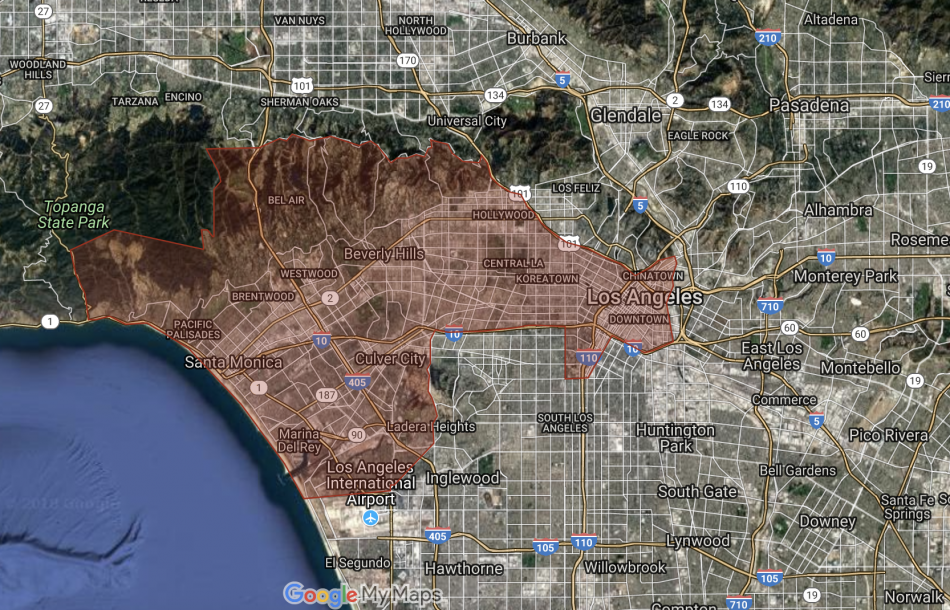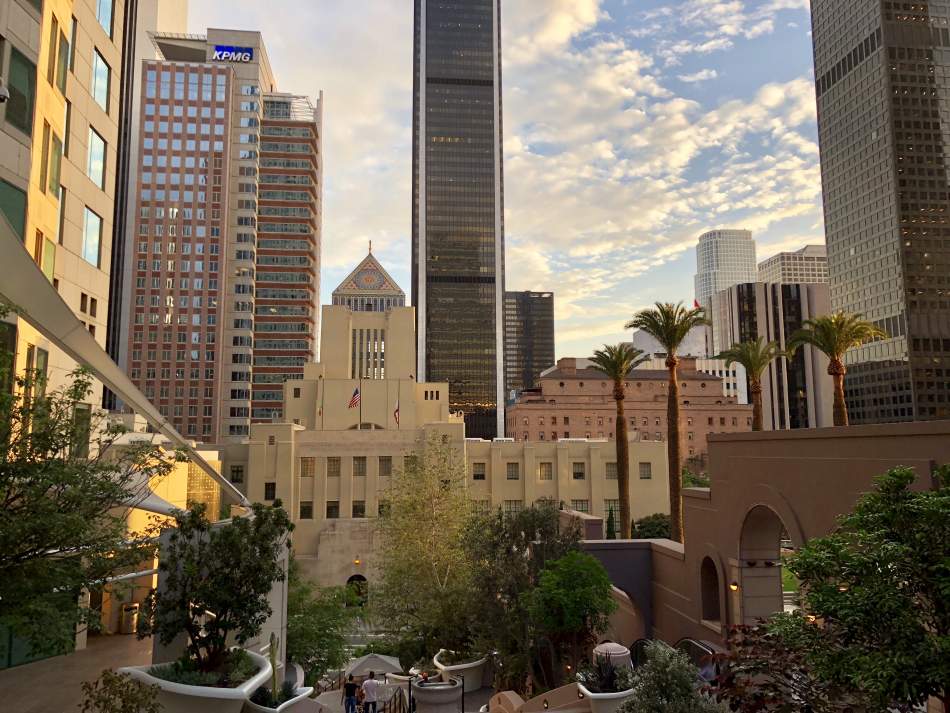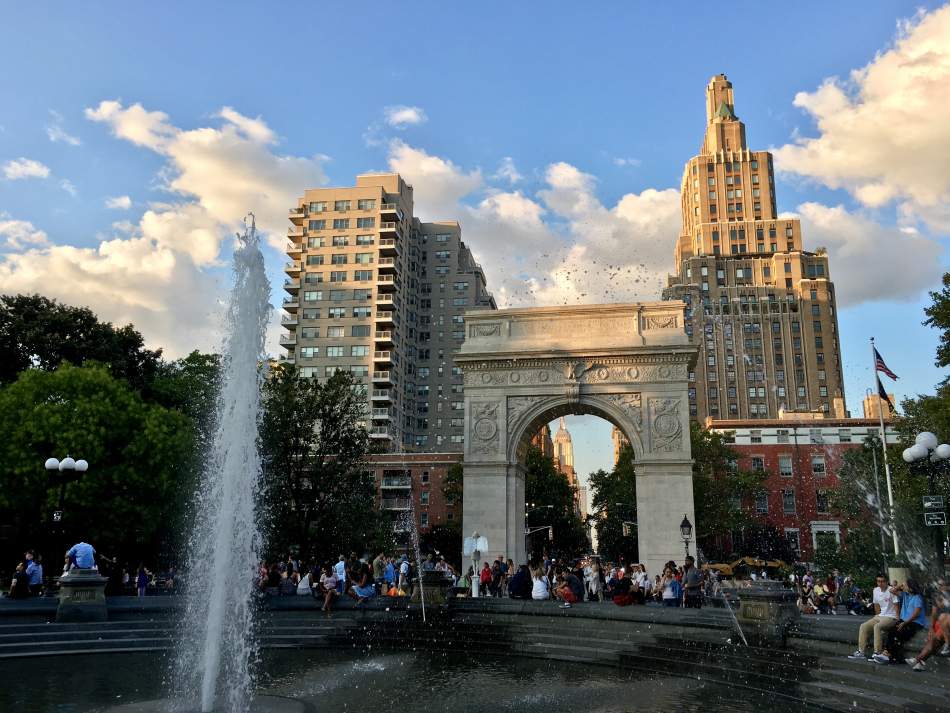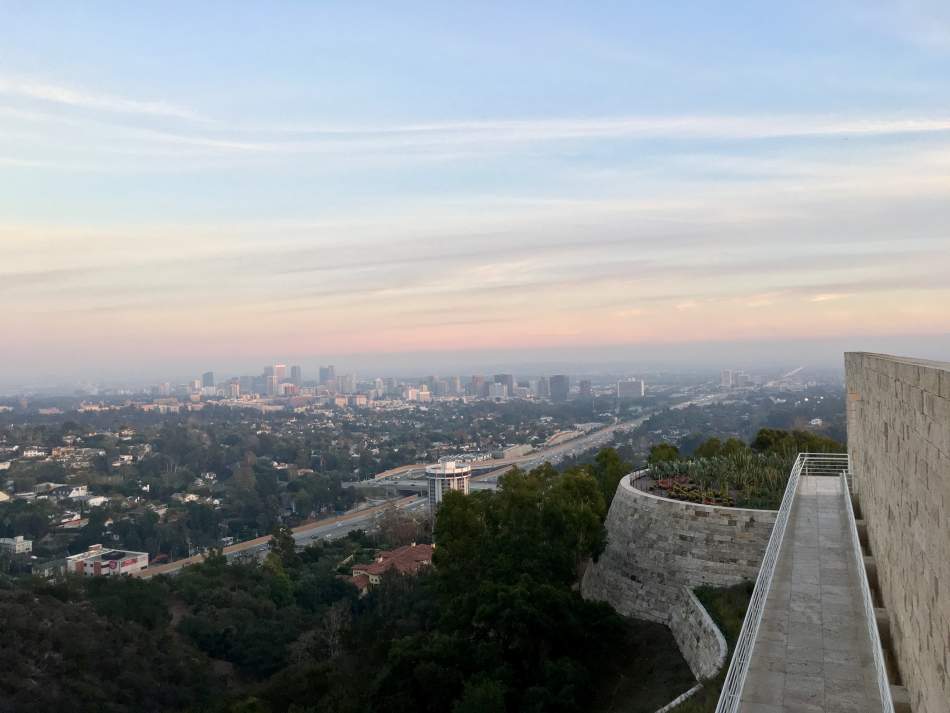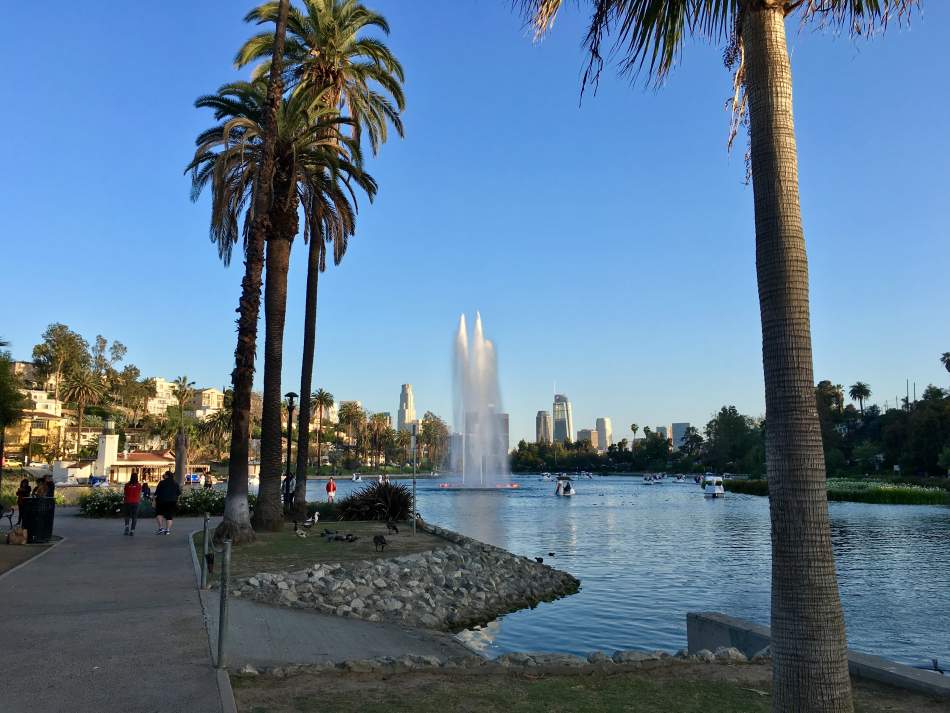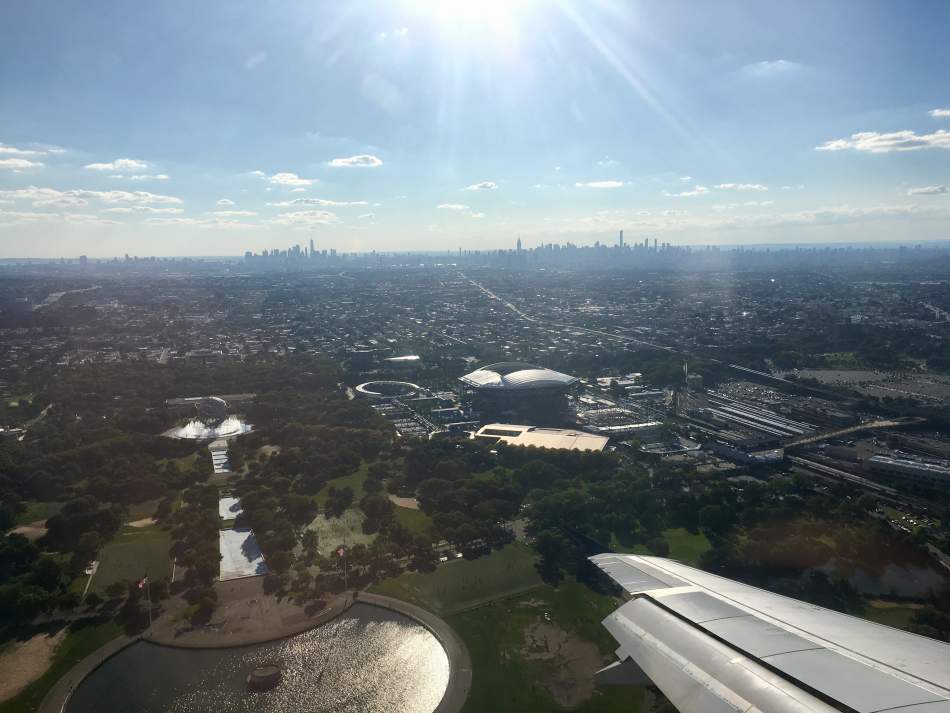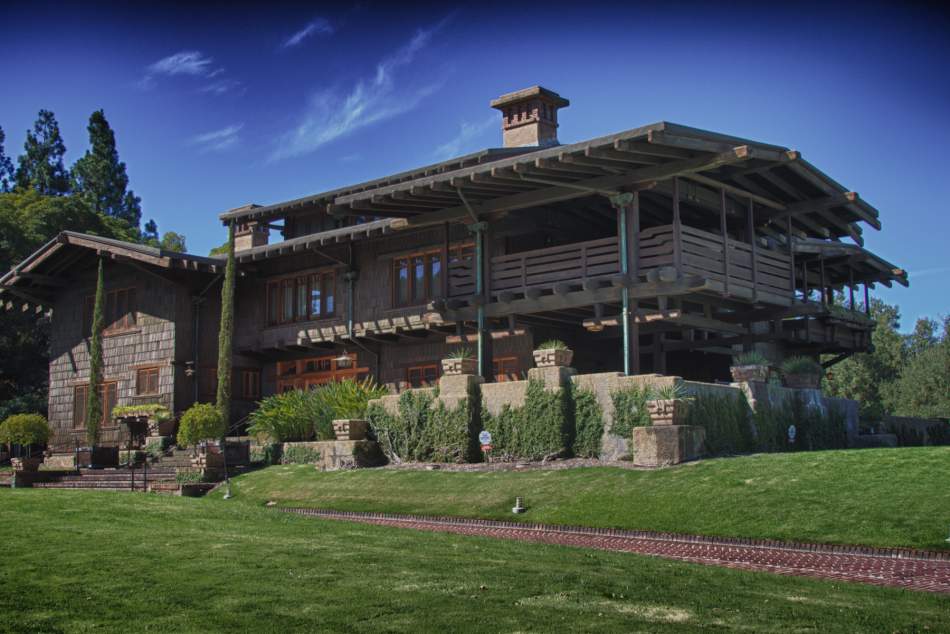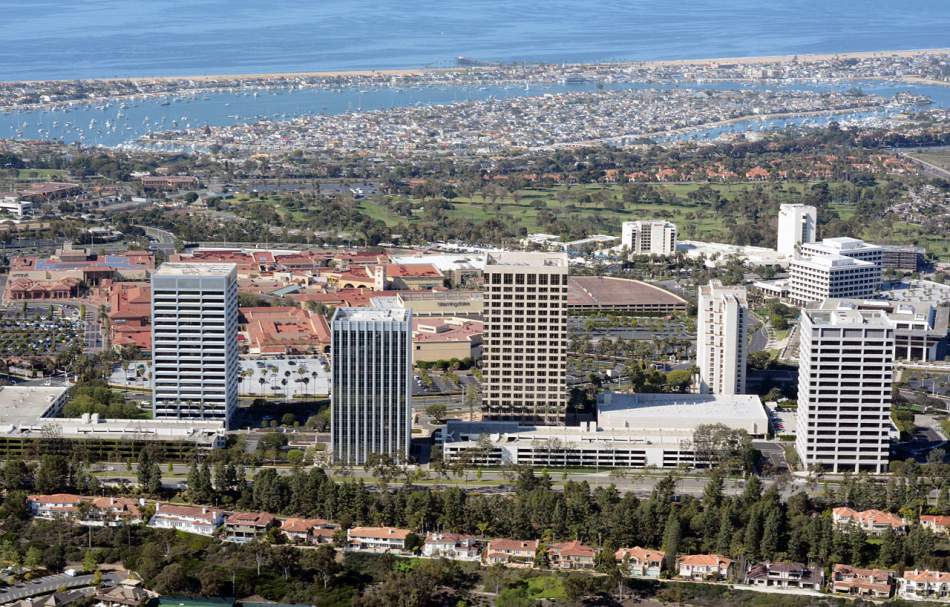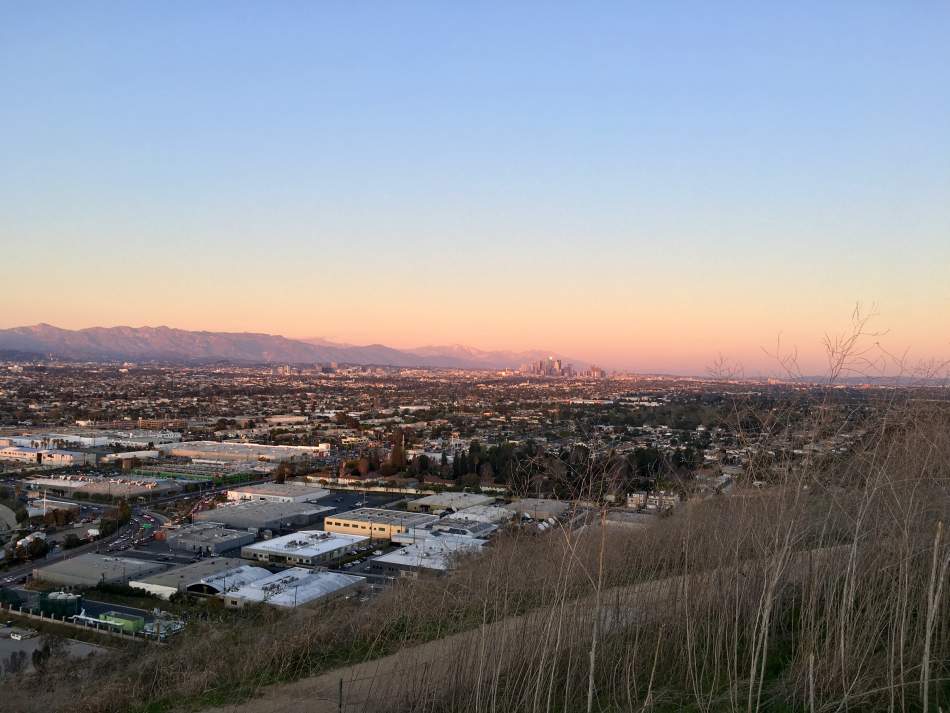There is a tendency both amongst Angelenos and New Yorkers to view the others’ city as the polar opposite of their own. New York is dense and space is oriented around the sidewalk and the train; Los Angeles is spread out and space is oriented around boulevards and freeways. New York is brutally cold in the winter and stiflingly hot in the summer; Los Angeles is just slightly too warm year-round. New York is built around a clearly defined urban core; Los Angeles is the place Dorothy Parker once derided as “72 suburbs in search of a city.”
This mythos contains some truths, but the overriding reality is that the similarities of these two cities far outweigh their differences. Both are home to peoples from around the world, modern testament to America’s dynamism as a melting pot. Both are cultural and economic engines on a global scale, the 2nd and 3rd largest urban economies in the world (Tokyo holds #1). And both contain a vast array of neighborhoods, each with its own distinctive character and culture.
LA also has a more ‘normal’ urban form than many observers think, which is manifested in its similarities to New York. Of course, LA doesn’t have the defined central municipality and boroughs as New York does, and there are many lifestyle differences between the two metros. But when you look at LA’s historic development patterns and the current functions of its various regions, they mirror those of New York City to a surprising degree. Most areas of the greater Los Angeles region can find direct analogs in New York and its surroundings. LA has its own iterations of Brooklyn, Central Park, Times Square, and more – and the social roles they all play here are similar.
There is a “there there” in LA, it just doesn’t present itself as obviously as it does in many other great cities. This article will serve as a guide for all those New Yorkers making the trek across the continent, either for a little while or permanently, and it may provide long-time Angelenos with a new way of thinking about the city as well. Additionally, given how much of the literature about this city is shaped by those from outside of it, it is my hope that this article will give those external writers a more familiar reference point as they grapple with this seemingly overwhelming metropolis.
(Note: It may help to open Google Maps for Los Angeles and New York City to follow along through this article.)
ManhattAngeles
Comparing Los Angeles to other cities can be difficult due to its unusual political boundaries. While many metro areas have a central primary city, such as San Francisco in the Bay Area, in LA there are major job and cultural centers such as Beverly Hills, West Hollywood, and Santa Monica which are centrally located but are legally their own municipalities, while distant suburbs at the edge of the San Fernando Valley are part of the City of LA. To make a true ‘apples to apples’ comparison between LA and other cities, we would need to define a legitimate core to the Los Angeles region – a ManhattAngeles, if you will.
I believe that the Manhattan of LA runs in a linear fashion westward from Downtown LA to Santa Monica. Its width encompasses Greater DTLA (including USC and Exposition Park), then moving westward it extends from the Santa Monica Mountains / Hollywood Hills in the north to roughly the 10 freeway in the south, widening as it approaches the coast to include Culver City and the beach cities south to LAX. It encompasses a few municipalities, but only some portions of the City of LA. Most of the remaining area within official City bounds, as well as some other proximate communities, constitute LA’s “outer boroughs”, to be described in the next section.
What defines a city’s center? Perhaps the best research on this subject when it comes to Los Angeles came from USC graduate student Samuel Krueger. With a focus on clusters of lifestyle and cultural elements, Krueger mapped what he called the “Wilshire - Santa Monica Corridor” – a linear belt of “centrality” running along those two boulevards from Downtown LA to Santa Monica. His data-driven approach was verified in that it correctly identified the “centers” of New York and Chicago, as well.
I accept Krueger’s core methodology, however I would add to it a consideration of job centers, high value homes, transit nodes, and hotbeds of real estate investment. Additionally, the means through which Angelenos move about says something about its different boroughs. Within a single borough, it is often most efficient to drive on surface streets rather than trek to and from the freeway; freeways are usually necessary for inter-borough transit. LA may be a region of freeways, but it is a city of boulevards.
Part of what makes ManhattAngeles such an interesting place in comparison to Manhattan is in fact how similar their historic development patterns are. Moving north up the island of Manhattan presents a very similar pattern of neighborhoods and development history as does moving west from DTLA toward the beach. New York was founded on the southern tip of the island and expanded northward over time. Its original business hub was in Lower Manhattan, and the newer hub is in Midtown. Los Angeles was founded in what is now Downtown and the core of the city expanded westward over time. Its original business district was Downtown, and the newer hub is on the Westside. Both cities’ patterns of expansion, divestment, and reinvestment, following broader trends in American culture and history, have left many parallel neighborhoods in analogous locations across their main urban cores – though all of these neighborhoods are a bit more smushed together in New York, of course.
Lower Manhattan was the original New York, back when Harlem was pastureland and Broadway was a Native American trail through the wilderness. It housed and continues to house the city’s government and other major legacy institutions. It is also home to the city’s original business district, centered around Wall Street. Over the course of the 20th Century, much of Lower Manhattan was to some extent abandoned in favor of the newer, cleaner, and bigger business, residential, and cultural districts further uptown. Over recent decades, this process has reversed to some extent, as Lower Manhattan has been revitalized with businesses, people, and cultural outlets.
This story may sound familiar to anyone who follows Los Angeles development patterns, or even read my “L.A. Urbanized” series on this site. Downtown LA too was largely abandoned and turned into a super-sized office park in the middle of the 20th Century. However, reinvestment over recent decades is turning this part of the city around. It is developing an array of neighborhoods largely analogous to those in Lower Manhattan. DTLA’s Financial District, Civic Center, and Chinatown have clear parallels in the southern tip of Manhattan. Over years to come, we may see DTLA’s South Park emerge as a West Coast Tribeca, and its Arts District as a California SoHo. The areas immediately west of DTLA (Westlake/MacArthur Park and Pico-Union, for example) are in some respects analogous to Manhattan’s Lower East Side as the arrival point for many of the city’s successive immigrant groups. The urban economist Joel Kotkin was making this comparison as early as 1997.
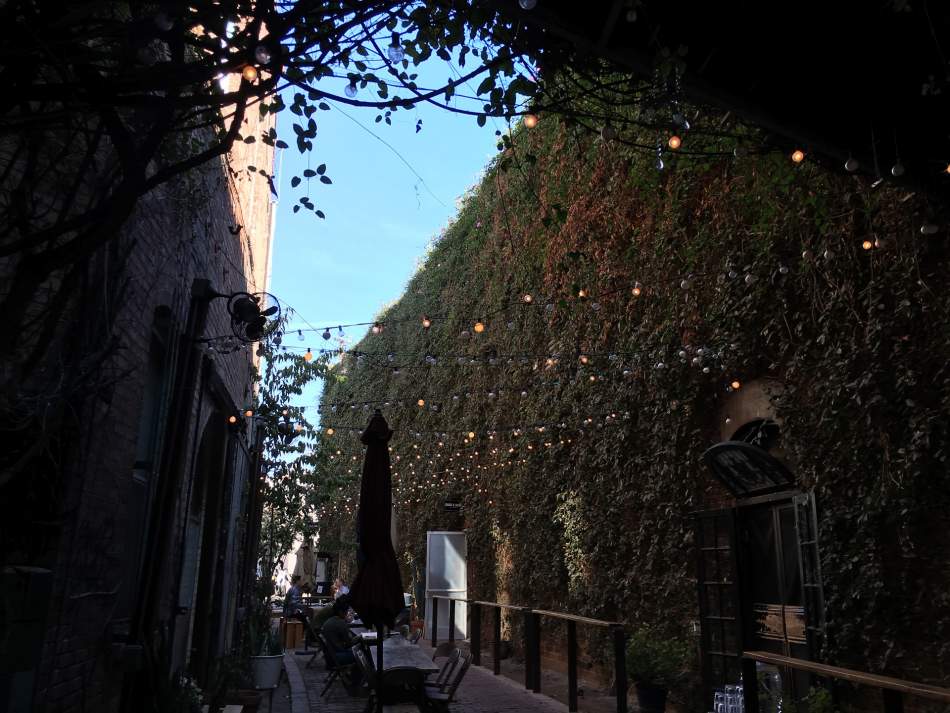
As we move a bit up the island of Manhattan and ‘up the island’ of ManhattAngeles we encounter more districts whose stories are similar to one another. Here we find neighborhoods with a fair bit of history and urban vibrancy, though not quite so dense as the cities’ original centers. Serving as cultural trendsetters with a historic vibe for their cities and the world beyond, neighborhoods such as Greenwich Village, Chelsea, Gramercy, and NoMad in New York share a lot of similarities as lifestyle centers with West Hollywood, the Sunset Strip, Beverly Grove, Mid-Wilshire, and Hancock Park in Los Angeles.
Moving further north to New York’s Korea Town, its analogue in LA is, well, Koreatown. Both are centrally located within the cities’ urban cores. They play prominent roles in the regions’ transit networks. And they are both secondary business and nightlife hubs; not quite so prominent as the major clusters on either side of them, but still notable in those regards.
The next stop on the northbound subway is at Times Square. Times Square is the icon of New York to an outsider, so it is no surprise that the place is fully overrun by tourists and associated shops, restaurants, and entertainment venues. Hollywood Boulevard and its “Walk of Fame” is, similarly, most outsiders’ primary image of Los Angeles. Accordingly, Hollywood Boulevard primarily serves a tourist audience. With its flashing lights, entertainment venues, throngs of people, and mixed feelings amongst locals, it is not hard to see the similarities between these two world famous destinations.
Venture a few blocks east of Times Square, however, and you’ll find yourself in Manhattan’s Midtown business district, which is probably the most important commercial agglomeration in the world. Ironically, many of the “Wall Street” banks are in fact headquartered here uptown, today. The city largely shifted its center of gravity uptown during the mid-20th Century, and though Lower Manhattan has recovered quite a bit, Midtown remains extremely vibrant as a business hub.
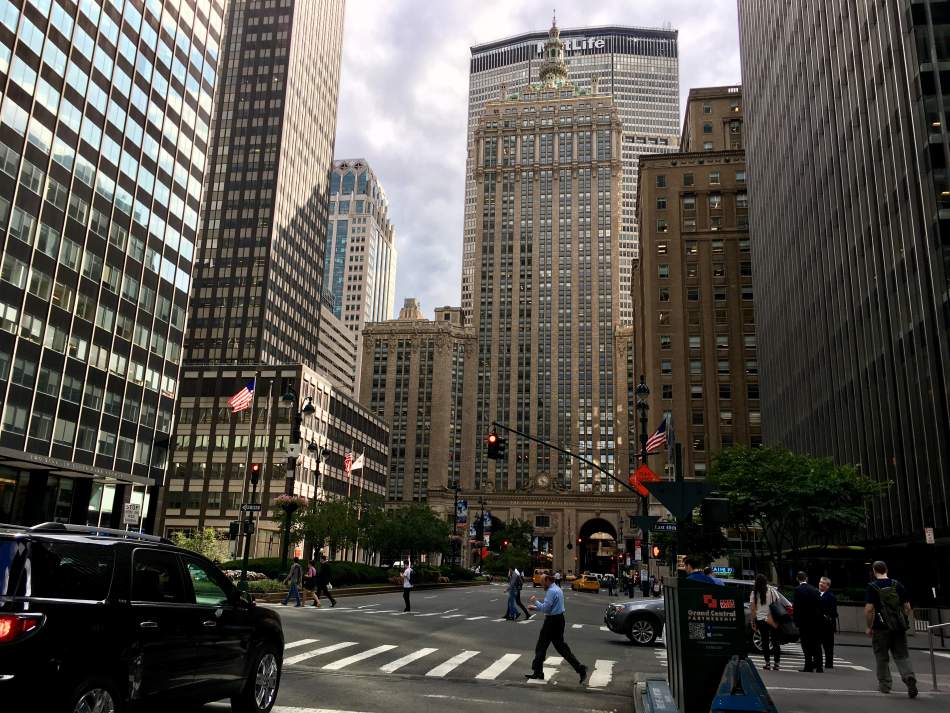
LA’s Westside developed as its own business hub over the course of the mid-20th Century as well. Many of New York’s most prestigious firms are based in Midtown, rather than the original city core; many of LA’s most prominent offices are based in Century City or Beverly Hills, rather than in Downtown. Offices in Westwood, Brentwood, and Santa Monica round out this robust, more recent business district. Moreover, this area also has much of the city’s high end housing stock, in a manner similar to Midtown Manhattan.
To the west of Times Square is Hell’s Kitchen, a neighborhood that used to be mostly industrial, but which has in recent years benefited from its Midtown proximity and has become a true lifestyle and creative hub. A similar pattern can be observed today in LA’s Culver City, which is emerging as a major creative office hub in its own right, located close to the existing Westside commercial core.
As you move further up Manhattan, you ultimately cross 59th Street, also known as Central Park South. This street acts in some respects as a dividing line, with the tonier and more residential Upper East and West Sides to its north, and the more commercial parts of the city to its south (though with no shortage of tony residential too). In Los Angeles, the same could be said of crossing west of the 405 freeway into the upscale residential neighborhoods such as Brentwood, Santa Monica, and the Pacific Palisades. The world to the west of the 405 is generally lower density and more residential in nature than the world to its east. These neighborhoods are home to many of the city’s elite, in a manner very similar to those on the Upper East and West Sides.
Both Manhattan and its Los Angeles counterpart are quite densely developed, but they are also both home to world famous open spaces. Those are New York’s Central Park, and LA’s expansive coastline of beaches. The most prominent of these is Santa Monica Beach, which together with its pier is a prominent draw for visitors from around the world and icon of the city, in a manner similar to Central Park. It also serves a similar function for its surrounding residential communities as Central Park does for its own. Much as Central Park serves as a focal point on the Upper East and West Sides, the beach and ocean is the open space around which much of the urban form and culture west of the 405 is organized.
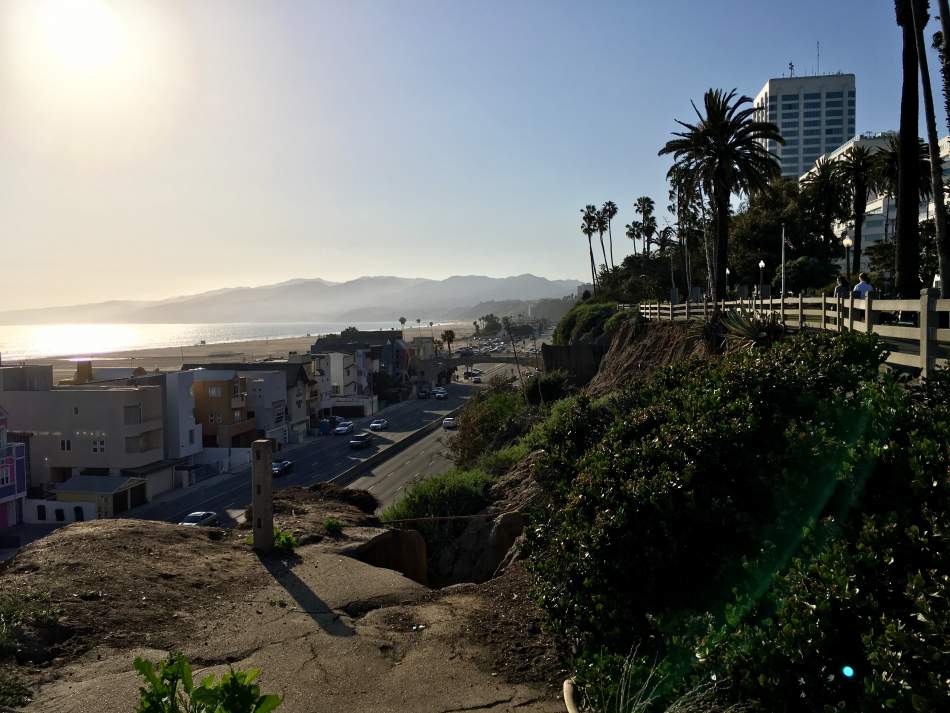
Taken together, this “ManhattAngeles” represents a compelling “center” to the Los Angeles region nearly as much as Manhattan represents the center of New York. Those who would argue against this notion often say that LA is extremely polycentric, more so than is the case in other major cities. This line of reasoning is less convincing when we compare the rest of the metro area with New York outside of Manhattan. Manhattan has multiple ‘centers’ in its own right. Moreover, its outer boroughs and suburbs thereafter all serve important roles in the region as well, in a manner fairly similar to the arrangement in LA. The subsequent sections of this article will compare the two cities beyond their central cores, showing how their similarities of urban form continue.
The Outer Boroughs
New York’s outer boroughs are “suburbs” in some senses of the term, however in other respects they feel more like a part of the central city than do the more distant true suburbs beyond. The boroughs are deeply knit into the city’s economic and social fabric, and they entertain relatively few conflicts of identity as compared to the more distant suburbs (a topic I will return to in the subsequent section). In Los Angeles, there is a set of neighborhoods and municipalities that surround ManhattAngeles and function in a parallel manner to Brooklyn, Queens, the Bronx, and Staten Island.
The borough of Brooklyn conjures images of bearded hipsters, tattooed artists, and trendy shops and restaurant, rubbing up against much of the city’s diverse immigrant population and pockets of serious poverty. It feels decidedly different from Manhattan, though no one would say that it isn’t part of the city. The “East Side” of Los Angeles is very similar in many regards. I’ll take an expansive definition of the East Side, an area including Thai Town and Los Feliz east of Hollywood across the 101 freeway, Silver Lake, Echo Park, Atwater Village, Highland Park and the broader Northeast LA area, and moving southeast to include Boyle Heights and East Los Angeles. This area encompasses a vast range of peoples, income levels, and lifestyles. It is certainly the spiritual home to the city’s counterculture, bohemians, and “bobos”. Yet at the same time most of the people who live in this area have little to do with those cultures. They are living the American immigrant experience, centered around their own ethnic/cultural communities.
Developed mostly in the years after WWII, the San Fernando Valley was built essentially as the prototype for suburbia in America. Ranches were subdivided into “ranch-style” homes as “the Valley” became LA’s primary bedroom community. Over the decades, however, I would argue that The Valley has developed an urban form, its own commercial centers, and its own suburbs. These, taken together with its tight economic integration and City of LA governance, make it play much more of a city borough role than an outer suburban one.
Indeed, the Valley is the Queens borough of Los Angeles. It is located just across the ‘river’ from ManhattAngeles (filled in here by the Santa Monica Mountains and Hollywood Hills). People transit to and from The Valley by taking one of a few ‘bridges’ through the mountains: the 405, 101, or 5 freeways. In a manner similar to Queens, the Valley is home to a wide array of lifestyles and migrant groups. However both Queens and the Valley are generally more middle class and suburban in orientation than are Brooklyn or the East Side. They are also both major population centers, with almost half of City of LA residents living in the San Fernando Valley. Some parts of Queens today (such as Long Island City) are being developed as effective extensions of Manhattan across the river; Valley neighborhoods such as Studio City, North Hollywood, Sherman Oaks, and Encino are taking on a similar character themselves.
On the other side of ManhattAngeles is South LA. This is an area of the city which is too often overlooked, but which forms an essential component of LA’s civic identity. The clear parallel in New York is the Bronx. Both are home to a diverse set of immigrants and many lower income people. Both of their pasts have been characterized by challenges with crime and civil strife, by “redevelopment” projects, and by frictional relations with law enforcement.
Yet both communities have also been essential for their respective cities, providing housing at a lower cost for many of the people who do the work to keep these cities functioning, and serving as a cultural wellspring for musical and artistic styles that have defined these cities on the global map. Today, the impact of crime has lessened in these boroughs, and they have seen some new outside investment. There is a growing concern over gentrification in both boroughs, however it has not yet arrived there to the degree it has in the Brooklyns or Manhattans of both cities.
The final New York City borough is Staten Island. Generally more suburban in character and located across the harbor from the other boroughs, Staten Island is relatively less plugged in to the city center. Yet, with relatively affordable housing and straightforward access to Lower Manhattan by ferry, Staten Island serves as an effective bedroom community for many of the municipal employees and others who are quietly keeping the city running.
In Los Angeles, the San Gabriel Valley and the Gateway Cities at least historically served in a similar capacity. Their appropriateness for this role is evidenced by the location of several key Los Angeles County offices in this region. Over recent years, however, the transformation of these two areas into specific ethnic/cultural suburban enclaves: Chinese in the San Gabriel Valley and Latino in the Gateway Cities (see Chapter 3 of William Fulton’s The Reluctant Metropolis) has added a distinct character to these areas for which there are few comparisons in New York City.
Up to this point all of the neighborhoods of Los Angeles we’ve discussed, sprawled and diverse as they are, I would consider to be a part of the core ‘city’ of Los Angeles, akin to being within the city boundaries of New York City. Moving forward, we will take another step back to observe those areas which no longer feel like they are ‘in the city’, yet which still fall within the city’s broader metro area.
Suburbs and Exurbs
Moving further out from LA’s center and surrounding ‘boroughs’, we arrive at an outer ring of suburbs and exurbs which complete this metropolitan region. Some of these neighborhoods function mostly as bedroom communities for the more central parts of the city, while others have defined cultures and lifestyles of their own – which at times clash with those of the core city. Indeed, I think that the key differentiator between outer boroughs and true suburbs and exurbs is that many may believe these suburbs and exurbs are ‘not a part’ of the main city, but rather urban agglomerations of their own. I do not subscribe to that line of reasoning for Los Angeles and New York in particular, where the fundamental growth stories and economic systems of the city and suburbs are inextricably linked. However, where people are so far from the city that they begin to believe they are not a part of it, that is where true suburbia begins.
Head northeast from Manhattan through Queens, and after a while the city will fall away behind you, and you’ll find yourself amongst the sumptuous homes, greenery, and coastlines of Long Island’s North Shore. This is Gatsby-land; a place for wealthy New Yorkers to have their space just outside the city. Head northwest from ManhattAngeles through LA’s Queens, the San Fernando Valley, and you will arrive in LA’s Gatsby-land. It is a stretch of spacious and scenic communities generally oriented around the Santa Monica Mountains and the Malibu coastline, including Malibu itself, Calabasas, Hidden Hills, Agoura, and Westlake Village. This area is famed for being the home of the Kardashian clan. It is not much of a stretch to see the similarities between the fictional story of Jay Gatsby and the “reality” story of the Kardashians. LA’s South Bay beach cities and adjacent Palos Verdes play a similar role, as well.
Setting the Kardashians aside, most people choose to live here not because it is convenient to the rest of the city, but rather because it is decidedly out of the city. Here, social life is less mediated by larger civic institutions. In the manner of a small village, social life is organized around tight-knit community groups, or it is direct between individuals and families. Private residences often substitute for public space when it comes to parties or dinners or other such gatherings. The North Shore and LA’s equivalents are worlds unto themselves, retreats into small town life at the edge of the big city.
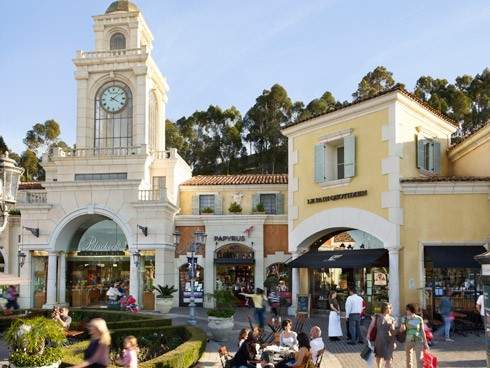
Moving deeper into Long Island, there is a long stretch of suburban neighborhoods. Notably, some of these serve as bedroom communities for Queens and other New York outer boroughs and suburbs. Moving deeper beyond LA’s San Fernando Valley, the suburban communities of Thousand Oaks, Simi Valley, Santa Clarita, and the Antelope Valley serve a similar function, providing relatively affordable and more spacious housing (at a greater distance) for people who work in the Valley and the rest of the city beyond.
Due north of Manhattan and the Bronx is Westchester County. Wealthy, well-educated, and at one time the home of many industrial tycoons, Westchester County finds its LA counterpart in the leafy streets of Pasadena and its surrounds. Both have a feeling of erudition in addition to affluence, with deep ties to local universities. Pasadena’s early development was driven largely by gilded age Midwestern magnates seeking a retreat during the freezing winters; Westchester’s early development was driven largely by gilded age Manhattan millionaires seeking a retreat during the hot and humid summer. Today, one can visit the historic Gamble House or Fenyes Mansion in Pasadena just as one can visit Kykuit or Lyndhurst in Westchester.
Across the Hudson River from Manhattan are the dense and industrially-oriented neighborhoods of the New Jersey waterfront. New York has always been a great port city, however today almost all of the shipping activity is concentrated on the New Jersey waterfront. In Los Angeles, industrial waterfront places such as Long Beach, Wilmington, and San Pedro play a very similar role – together processing nearly half the country’s oceanbound shipping, while supporting major population centers as well. This city-adjacent part of New Jersey has seen a boom of new residential and office development over recent years as prices in the city center have skyrocketed; the same has occurred in Long Beach.
Moving further inland from the New Jersey waterfront, you arrive at more typically suburban cities and towns, some of which are quite large. In Los Angeles, the equivalent region of the city is the inland suburban expanse of Orange County (not its coastline, which I will return to shortly). The reason this comparison is particularly sensible is because both places have an uncertain identity in relation to the centers of their metro areas. These New Jersey suburbs are across state lines from Manhattan, so can it they really be a part of New York? A similar reasoning goes for Orange County, which of course is not within Los Angeles County. Add to this some degree of cultural enmity in both cases. With many New Yorkers looking down on New Jersey and with Orange County’s history of being “across the Orange Curtain” from Los Angeles as a bastion of conservatism in California, it is clear why so many feel a divide. However, both northern New Jersey and Orange County are intricately linked into the dominant economic, social, cultural, and historical fabrics of their respective metro areas.
The strings of towns and cities feel interminable as you progress deeper and deeper west into New Jersey, even crossing another state boundary into northeastern Pennsylvania. The same experience is true as you continue east from the center of Los Angeles. LA’s “Inland Empire”, its stretch of development that extends forever eastward from the city, is akin to those westernmost suburbs of New York. The exurbs of San Bernardino and Riverside serve to anchor this distant region in a manner similar to Allentown and Trenton. All have largely industrial histories, and maintain a fair degree of that character to this day.
To the northeast of New York sits a series of exurbs with a fairly different orientation. The southwestern coast of Connecticut is one of the wealthier parts of the region. In particular, it serves as a home to the headquarters of several major corporations and financial institutions. Historically, many executives and well-paid employees have enjoyed its spacious suburban environment and spectacular coastline. Within the Greater Los Angeles area, the Orange County Coast and its surroundings have played a similar role as an exurban center of business within Southern California. Cities such as Newport Beach, Irvine, and Santa Ana are home to such businesses as PIMCO, Broadcom, First American Financial, and many regional headquarters.
Conclusion
At first glance, the differences between New York and Los Angeles as cities is starkly clear. New York builds up while Los Angeles builds out, and accordingly Angelenos are driving everywhere while New Yorkers are taking the subway and walking. It is clear that the spatial arrangement of the two cities and the means through which people move about them are quite different. However, on a more fundamental matter of which sorts of neighborhoods shape the city and how they developed and relate to each other, those differences begin to melt away. The experience of transporting yourself between neighborhoods is not the same, but the types of neighborhoods you’re moving between, and roughly the amount of travel time involved as well (even with traffic), are quite similar.
Both New York and Los Angeles boomed and expanded out from their historic cores, largely abandoned those original neighborhoods over the 20th Century, and have re-discovered and re-invested in them over the past few decades. The main thrust of this expansion moved north up Manhattan, and west across the LA Basin to form an area I call ManhattAngeles. The northward development of Manhattan was pursued along a similar timeline (however in different decades) to the westward development of ManhattAngeles, leaving both cities with comparable neighborhoods arranged in analogous patterns. Other urban and suburban growth spread in every which direction in both cases, creating a series of ‘boroughs’ that ring the core cities, and subsequent layers of suburbs and exurbs further out still.
Perhaps there is a set of underlying fundamentals which encourages parallel growth across these two megalopolises, as well as several others not addressed in this article. That notion may be well suited for further exploration. For now, it is my hope that this article has demonstrated that, despite their lifestyle differences, Los Angeles and New York are fundamentally similar animals. Los Angeles is not an impenetrably strange and exotic land, where none of the rules from back home apply, as many an outside writer might have you believe. Rather, it is the flip side to the same coin.
Jason Lopata works as a land use consultant with Craig Lawson & Co., LLC, helping real estate development projects in LA navigate the city approvals process. Jason previously spent time on the Business Team of LA Mayor Eric Garcetti. He also writes articles on globalization and urban development for Stratfor, the geopolitical analysis website. Jason received his bachelor’s degree from Stanford University and completed programs of study at the University of Oxford and at UCLA’s Anderson School of Management. While at Stanford, he founded and led the student real estate organization, and authored his senior thesis on Los Angeles development over the past 30 years. Read his earlier longform series "L.A. Urbanized." by clicking here.




